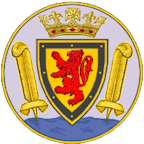1901 Description
An illustrated postal directory with map and historical notices, of twenty parishes in East Cornwall, for the new century
SALTASH is a very ancient borough and corporate town, on the western bank of the River Tamar, and had conferred on it the full privileges of a Municipal Borough in 1885. It has a station on the G. W. Railway, and is 4 miles distant from Plymouth.
The town is built on a steep, rocky acclivity, the old houses rising tier above tier to the summit of the hill at Longstone, the scenery from which is very fine; on the south-east the harbour of Plymouth and Breakwater, the Hamoaze, and Mount Edgcumbe are visible, while at the rear are the Dartmoor Hills, and the Rivers Tamar and Tavy winding their way down to the sea.
The town is improving rapidly, new houses are being continually built. It has increased its population within the last ten years by 402.
The boundaries of the borough and parish are co-extensive, the liberty of the water Tamar which is attached to this borough, extends (by prescriptive rights, as well as by the provisions of various charters) "seaward to an imaginary line drawn across Plymouth Sound from Penlee Point on the west to the Shagstone on the east, thence to Prince's Rock on the Laira to Old Man's Beard in the Tavy, to Ogle Tor Rock, above Calstock, in the Tamar, to Cuddenbeak Point in the St. Germans or Lynher River, to Cumble Tor Rock in the Lynher, and to all the intervening bays, creeks and places as far as high water mark." The magisterial and criminal jurisdiction of the borough, is exercised throughout the whole area of the "liberty", and by prescription and chartered rights, the corporation of Saltash are entitled to port dues of one shilling from every vessel dropping anchor in the port of Plymouth, within the limits defined above, these dues being now taken by persons to whom they are let on lease; the Corporation are also entitled to the oysterage within the "liberty", except in the Cattewater, and to the right of dredging for oysters; and have the control of the Saltash Ferry, together with other privileges.
There is a very efficient service of river-passenger and excursion, steamers belonging to the Saltash Steamboat Co.
The town is well paved, lighted with gas by a company, and in 1889 a system of drainage was carried out at a cost of £900; and a further sum of £2,500 has been spent in securing a better and continuous water supply from Plymouth. The pipes for which are laid on the bed of the river.
The Royal Albert Bridge, which carries the Great Western Railway across the River Tamar, was erected in 1857-59, at a cost of £230,000, from the designs of I. K. Brunel, Esq. This bridge was opened by H.R.H. Prince Consort on the 2nd May, 1859.
The living is a perpetual curacy, net yearly value £145, including 4 acres of glebe, with residence, in the gift of the Bishop of Truro, by deed of gift from the parishioners, who purchased the advowson and transferred it to the bishop, in order to obtain the assignment of a parochial district, and it has been held since 1895 by the Rev. Arthur Preedy. The Baptist Chapel, in Culver Road, will seat 400 persons. The Wesley Centenary and Memorial Chapel, in Fore Street, erected in 1891, at a cost of £3,600, will seat 620 persons.
The Guildhall, in the principal street, is a plain building supported on granite pillars.
There is a steam ferry south of the Railway Bridge belonging to and worked by the Corporation, which is free to the inhabitants on foot, but strangers pay one penny toll each way. It conveys also horses, carts, coaches, and all manner of vehicles across the Tamar, and yields a good revenue to the funds of the Corporation
page updated 2025-03-21
